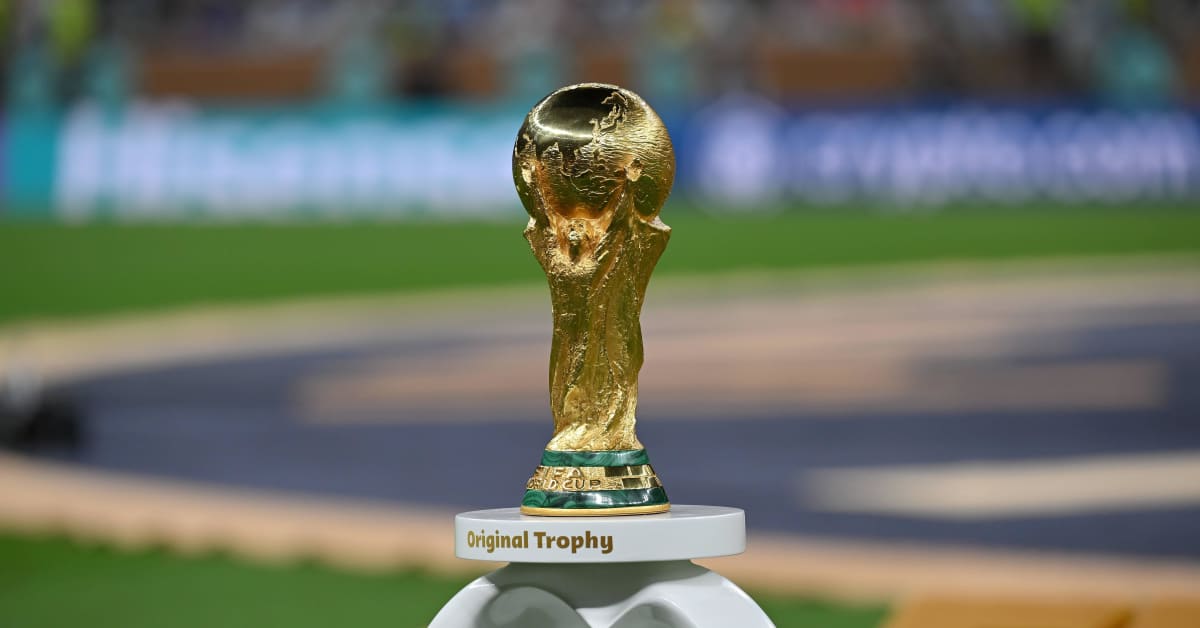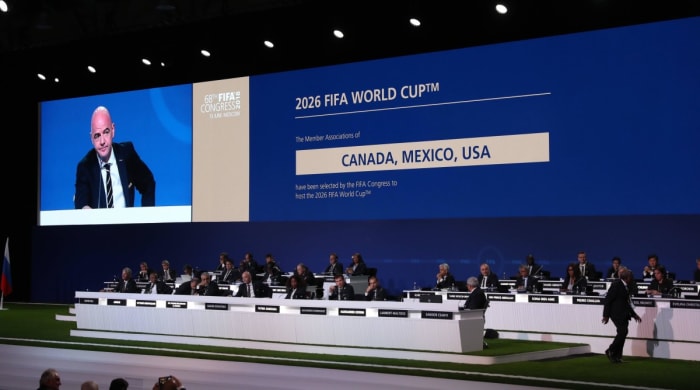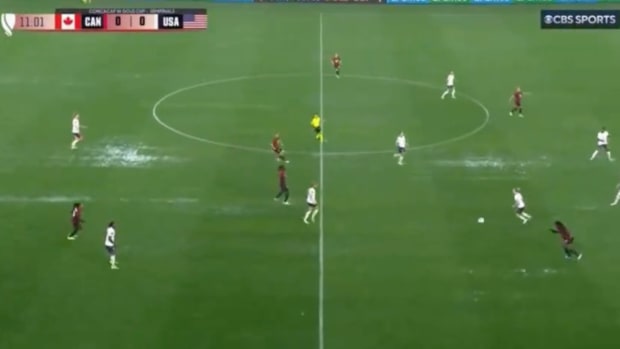FIFA Confirms Four-Team Groups for 2026 World Cup, New Club World Cup Qualification
Beguiled by the prospect of an expanded World Cup, FIFA didn’t seem to be that worried about staging a better World Cup. More was what mattered.
So as it rammed through a plan to boost its men’s event from 32 to an unwieldy 48 teams, FIFA quickly settled on a problematic format: 16 groups of three teams each, with the top two finishers advancing to the knockouts following a three-game round robin. Not only did that structure sap the first round of considerable drama, it might offer the two teams contesting the group stage finale incentive to collude on a mutually beneficial result.
The U.S., Mexico and Canada won the right to host the 2026 World Cup under that format. There would be 80 games—60 in the U.S. plus 10 each in Mexico and Canada. FIFA argued at the time that the tournament’s “footprint” hadn’t changed. It would be staged across the same number of days as the 32-team World Cup. Semifinalists would still play seven matches.
But the gripping spectacle as the first round concluded last November in Qatar—multiple nations saw their fortunes rise and fall as late goals in simultaneous group-stage deciders determined who advanced—prompted FIFA to reassess its plan.
“The groups of four have been absolutely incredible until the last minute of the last match,” FIFA president Gianni Infantino, the architect of the expansion to 48 teams, said toward the end of the 2022 World Cup. “We have to revisit or at least re-discuss the format.”
It has done so, and once again, the governing body’s solution is more. So on Tuesday in Rwanda, the ruling FIFA Council decided to grow the 2026 tournament again. Instead of 16 three-team groups, there will be 12 groups of four teams each. And instead of 80 games, there will be a glut of 104.
Those 104 matches (there were 64 under the 32-team format used from 1998-2022) will be spread across 16 stadiums in the U.S., Canada and Mexico. The semifinalists will play a record eight games rather than seven, which might prompt complaints from players and unions concerned with fatigue. FIFA will compensate for the longer, 39-day competition by cutting the number of time teams have to prepare. Previously, players would be available for the ’26 tournament 23 days before kickoff. That amount has been reduced to 16.
“The revised format mitigates the risk of collusion and ensures that all the teams play a minimum of three matches, while providing balanced rest time between competing teams,” FIFA said Tuesday. “With 56 days, the total combined number of rest, release and tournament days remain identical to the 2010, 2014 and 2018 FIFA World Cup editions.”
Following the traditional group-stage round robin, the top two finishers in each quartet, plus the eight third-place sides with the best records, will advance to a new round of 32. There will be less jeopardy as a greater percentage of teams move on, but the simultaneous group-stage deciders will remain. The 32 survivors will play knockout matches from there, leading to the final on July 19, 2026 at a U.S. stadium to be determined.
The U.S., Mexico and Canada have qualified automatically for the 2026 World Cup as hosts. Concacaf will furnish an additional 3-5 teams. It unveiled its qualifying format last month.
FIFA Club World Cup
FIFA on Tuesday also unveiled additional details of its expanded Club World Cup, which will become a quadrennial, 32-team tournament in 2025 (it’s now an annual, seven-team event.) Here’s how qualification will work:
UEFA (Europe) - 12 teams
CONMEBOL (South America) - Six teams
Concacaf (North America) - Four teams
CAF (Africa) - Four teams
AFC (Asia) - Four teams
OFC (Oceania) - One team
Host nation - One team
Qualifying will be based on the club seasons ending in 2021-24. Critically, a limit of two clubs from one country will apply unless more than two teams from the same nation win their continental championship during the four-year period.
For UEFA and CONMEBOL, the winners of the four preceding Champions League and Copa Libertadores tournaments will book passage to the Club World Cup. The additional teams will be decided based on a club ranking or coefficient covering the same four-year period. That means Chelsea, Real Madrid, Palmeiras and Flamengo are already in.
For Concacaf, CAF and the AFC, the previous four continental champions will qualify. If anyone wins two or more titles, “a club ranking calculated based on sporting criteria will be used to grant access,” FIFA announced. Concacaf doesn’t currently produce such a ranking. Already in: Seattle Sounders, Monterrey, Al Ahly (Egypt), Wydad Casablanca (Morocco), Ulsan Hyundai (South Korea), Al Hilal (Saudi Arabia).
In Oceania, the top-ranked OFC Champions League winner will go. The mechanism to determine the representative from the host nation, which hasn’t been decided, will be determined at a later date.
FIFA also unveiled a second global club competition—a sort of Confederations Cup for clubs—that will be contested annually from 2024, replacing the abbreviated version of the Club World Cup that will conclude with this year’s edition. The champions of South America, Concacaf, Asia, Africa and Oceania will contest a playoff, with the survivor contesting the final against the UEFA Champions League winners. FIFA said the new event was created “given the need expressed by the confederations for the champions of their premier club competitions to play each other annually to stimulate competitiveness.”
In January, Concacaf and CONMEBOL announced an annual four-team club competition kicking off in 2024 that would feature two entrants from each region. By ’25, each Concacaf Champions League winner theoretically would be obligated to play in that event, FIFA’s new annual playoff, and then the quadrennial Club World Cup.






